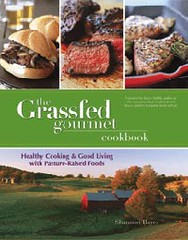What Are The Grades of Beef and What Do They Mean?
There are 5 primary grades of beef:
PRIME ~ is produced from young, well-fed beef cattle. Only about 2% of the beef in the U.S. is graded Prime. It has abundant marbling and is generally sold in restaurants and hotels. Prime Roasts and Steaks are excellent for dry-heat cooking (roasting, broiling and grilling). This grade is the most expensive to purchase.
CHOICE ~ is high quality, but has less marbling than Prime. Choice Roasts and Steaks from the loin and rib will be very tender, juicy and flavorful. Like Prime, these are suited to dry-heat cooking. Many of the less tender cuts, such as those from the rump, round and blade chuck, can also be cooked with dry heat, but be careful not to overcook these. Using a meat thermometer takes the guesswork out of cooking and assures a safe internal temperature.
SELECT ~ is very uniform in quality and normally leaner than the higher grades. It is fairly tender, but because it has less marbling, it may lack some of the juciness and flavor of the higher grades. Most meat purchased in the grocery today is graded SELECT. Only the tender cuts (loin, rib, sirloin) should be cooked with dry heat. Other cuts should be marinated before cooking or cooked with moisture to obtain maximum tenderness and flavor.
Standard and Commercial ~ frequently sold as un-graded or as store-brand meat.
Utility, Cutter and Canner ~ are seldom, if ever, sold at retail but are used instead to make hamburger and processed products.
8:37 AM
|
Categories:
admin
|




